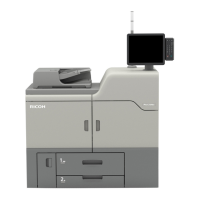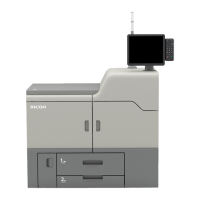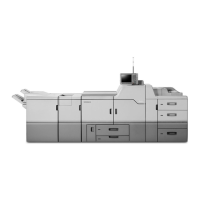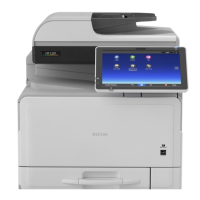Problem Cause Solution
When graphics are printed,
the output and the screen
are different.
If the printer driver is
configured to use the
graphics command, the
graphics command from the
machine is used to print.
If you want to print accurately, set the
printer driver to print without using the
graphics command. For details about
settings for printer driver, see the
printer driver Help.
Lines of garbled or
unwanted alphanumeric
characters appear.
An incorrect printer
language might have been
selected.
Select the correct printer driver, and
then print the file again.
Images are cut off, or
margins are printed.
You may be using paper
smaller than the size
selected in the application.
Use the same size paper as that
selected in the application. If you
cannot load paper of the correct size,
use the reduction function to reduce the
image, and then print. For details
about reduction function, see the
printer driver Help.
Photo images are coarse. Some applications print at
lower resolution.
Use the application's settings or printer
driver's settings to specify a higher
resolution. For details about printer
driver's settings, see the printer driver
Help.
A solid line is printed as a
dashed line or appears
blurred.
Dither patterns do not match.
Only when using PostScript 3
Change the dithering settings on
the printer driver. For details
about the dithering settings, see
the printer driver Help.
Fine or inconsistently thick
lines appear, or fine lines do
not appear.
Extremely fine lines have
been specified, or a color
that is too light has been
specified for the lines.
Only when using PostScript 3
Change the dithering settings on
the printer driver. For details
about the dithering settings, see
the printer driver Help.
If the problem continues after you
change the dithering settings, use the
settings of the application in which the
image was created to change the
thickness of the lines.
11. Troubleshooting
484

